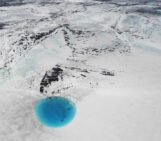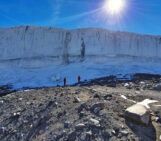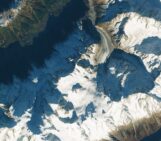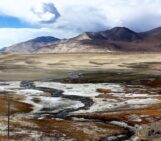There are many different types of glaciers, each defined by where they’re located and how they terminate. Piedmont glaciers are those that flow out from a confining valley and spill out into the open, forming wide lobes. This one is Malaspina Glacier, which spreads out over the Seward Ice Field.
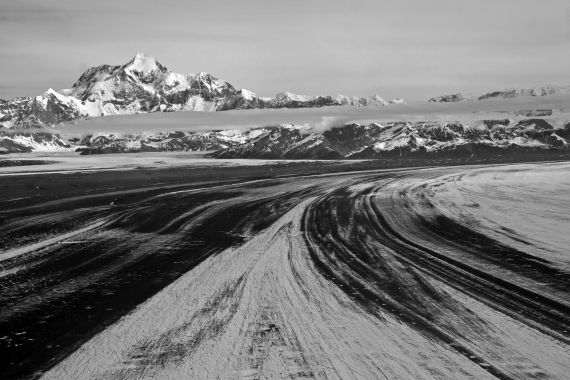
“Mt St Elias and Malaspina” by Jean-Daniel Champagnac, distributed by the EGU under a Creative Commons licence.
Stretching 45 kilometres over the lowlands towards the sea, and spanning some 65 kilometres across, Malaspina is the world’s largest piedmont glacier and the classic example of its kind. Here’s how it would look face on:
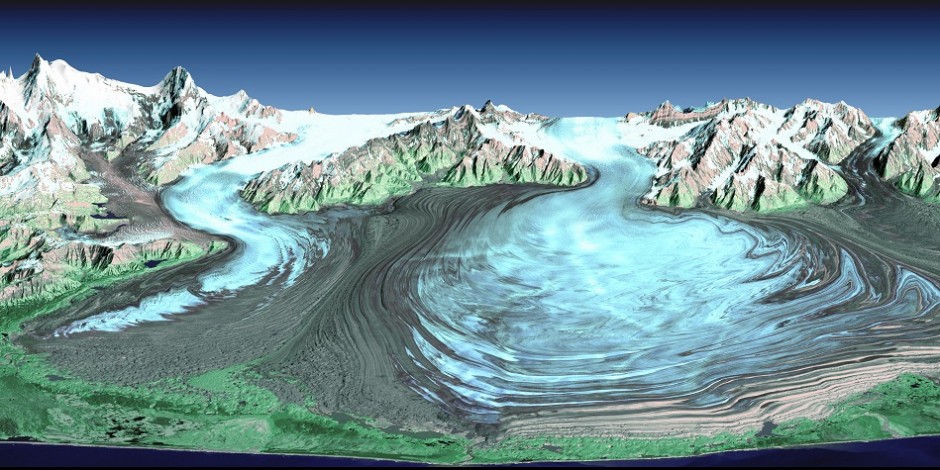
Malaspina Glacier is created by the junction of several powerful glaciers from the North including Agassiz Glacier (left) and Seward Glacier (right). (Credit: SRTM Team NASA/JPL/NIMA)
Ahead of the glacier are a number of folded moraines. Moraines are piles of unconsolidated sediment and rocky debris that have been eroded from the glacier valley walls and deposited by the glacier. Malaspina’s moraines have been folded by the force of ice pressing in from behind.
The striations in Champagnac’s photo are the remnants of glacier moraines. A number of tributary glaciers coalesce to form Malaspina, and as they enter the flow of this glacier, their debris is folded into the moving mass of ice. As this glacier flows, the debris flows with it, producing the striking striations on the glacier surface.
References:
National Snow and Ice Data Center (NSIDC): What types of glaciers are there?, accessed December 2013
NASA Earth Observatory, accessed December 2013
The EGU’s open access geoscience image repository has a new and improved home at http://imaggeo.egu.eu! We’ve redesigned the website to give the database a more modern, image-based layout and have implemented a fully responsive page design. This means the new website adapts to the visitor’s screen size and looks good whether you’re using a smartphone, tablet or laptop.
Photos uploaded to Imaggeo are licensed under Creative Commons, meaning they can be used by scientists, the public, and even the press, provided the original author is credited. Further, you can now choose how you would like to licence your work. Users can also connect to Imaggeo through their social media accounts too! Find out more about the relaunch on the EGU website.

